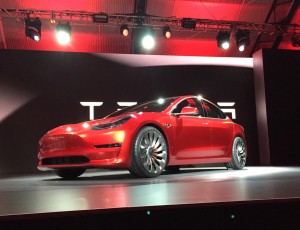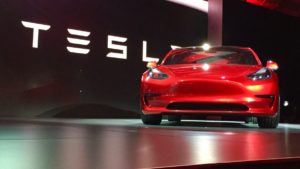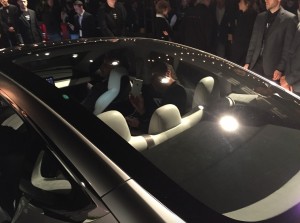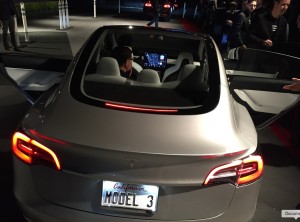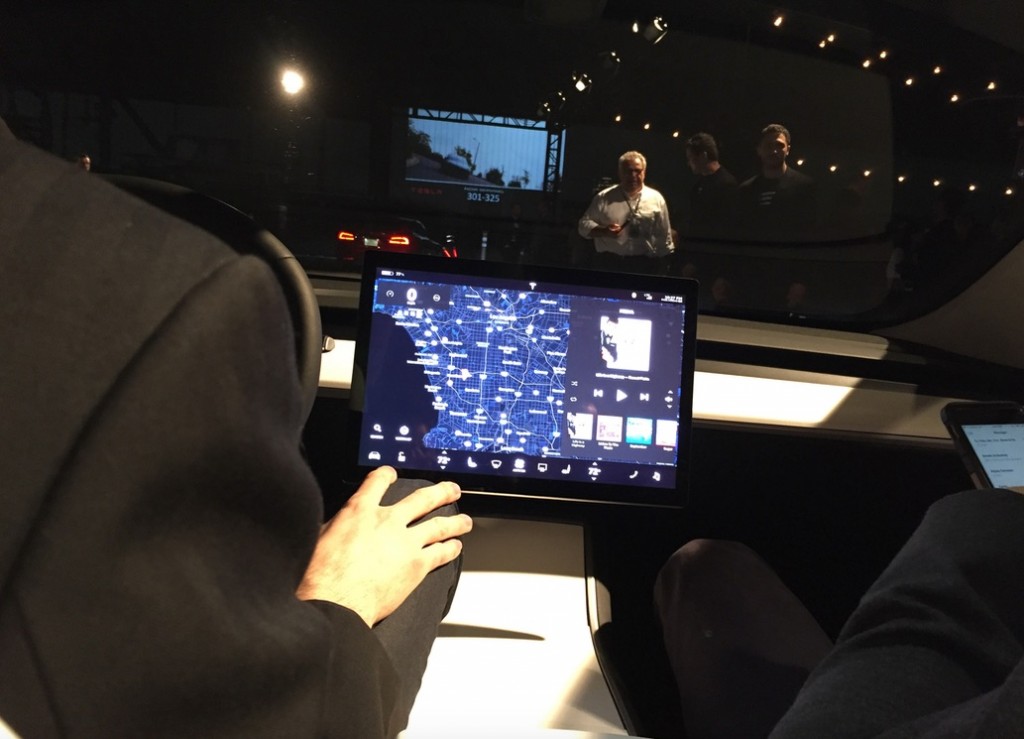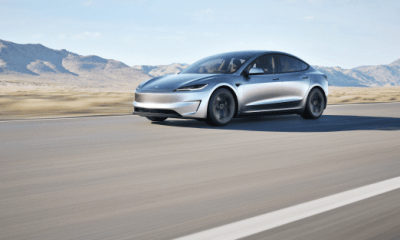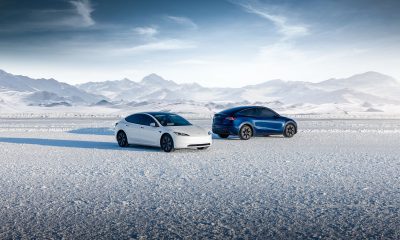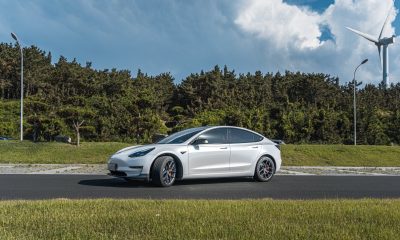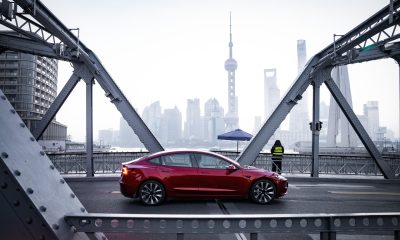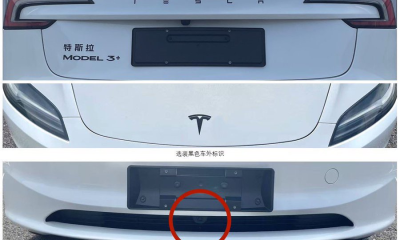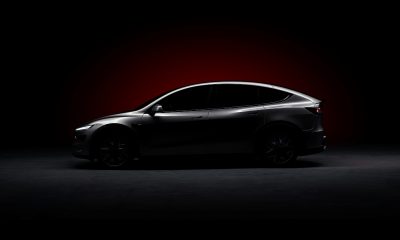News
The Tesla Model 3 is here and it’s ridiculously sexy
The Tesla Model 3 has been introduced to the world. Elon Musk promised a “compelling” car. It looks like he and the Tesla Motors team have delivered on that promise.
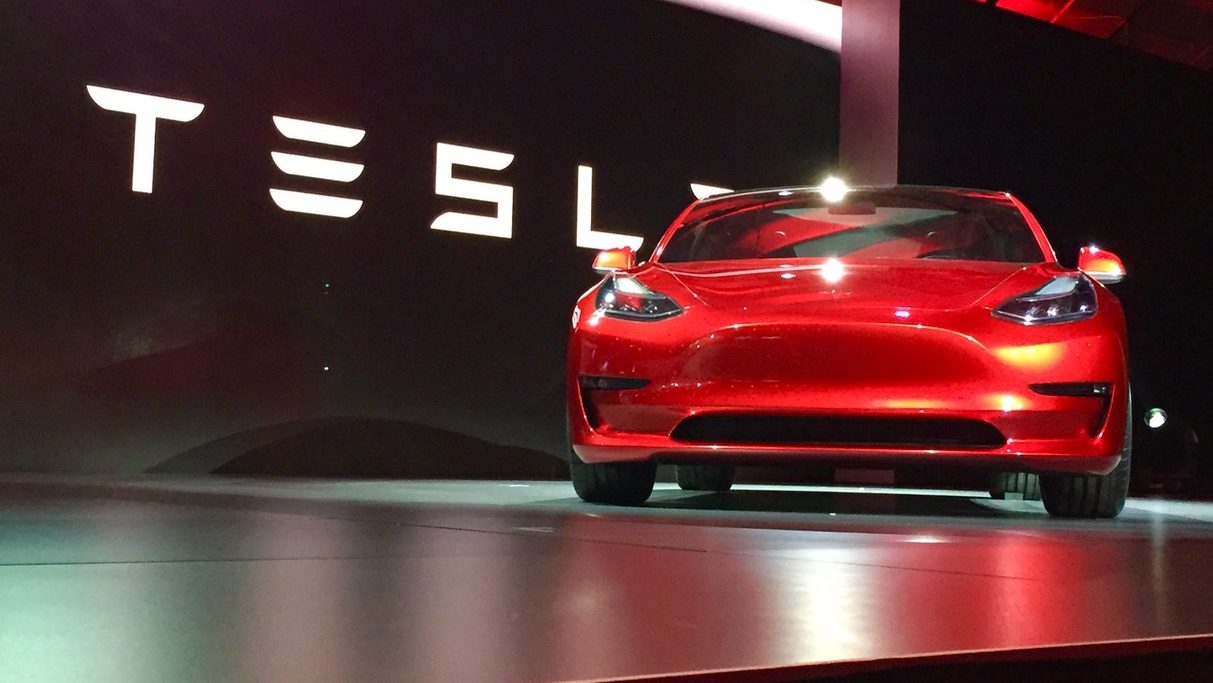
Tesla CEO Elon Musk revealed the new Model 3 Thursday evening at the Hawthorne Design Center to overwhelming fanfare. The Model 3, referred to by Musk as part of “the master plan”, will have at least 215 miles of range and have a starting price of $35,000. Acceleration on the base model four-door sedan will be 0-60 mph in under 6 seconds though Musk alluded to future versions that will go much faster. We suspect Part 2 of the Model 3 event will reveal a performance version of the vehicle amongst other core platform features (e.g. battery, dashboard, doors). The Model 3 will also come standard with Autopilot and Supercharging capabilities.
The minute Musk introduced three beautiful Model 3’s in the color red, matte grey and silver, to take stage, immediately evident was the sleek new fascia that half resembles the design of the Model X front.
Model 3 Design
Tesla Chief Designer Franz von Holzhausen who designed the Model S and Model X told Wired back in January, the goal for the Model 3 was to give it “timeless” styling that will appeal to customers for many years, not just a few months. And that’s exactly what he did with the Model 3.
The look of the Model 3 is clean, and it has an uncluttered design that could easily be taken for a concept car. Except this is as close to a production prototype you can get, we were told.
Panoramic Glass Roof
The roof of the Model 3 is made entirely of glass making for a remarkable overhead view from anywhere within the vehicle. This is the case for viewing from the front seats as well as through the rear passenger seats.
The large piece of glass extends from the base of the windshield to the trunk.
Center Display
Tesla used an overall smaller center touchscreen display on the Model 3, measuring 15″ as opposed to the 17″ display found on the Model S and Model X. The touchscreen is also mounted in a horizontal landscape position making for a wider viewport presumably to showcase more information without having to scroll. The Model 3 does not have a driver’s instrument cluster hence all of the information that would normally reside within that area, such as a speedometer, regen meter, and miscellaneous indicators, need to be displayed on the center screen.
Tesla Model 3 Test Ride
News
Tesla talks Semi ramp, Optimus, Robotaxi rollout, FSD with Wall Street firm
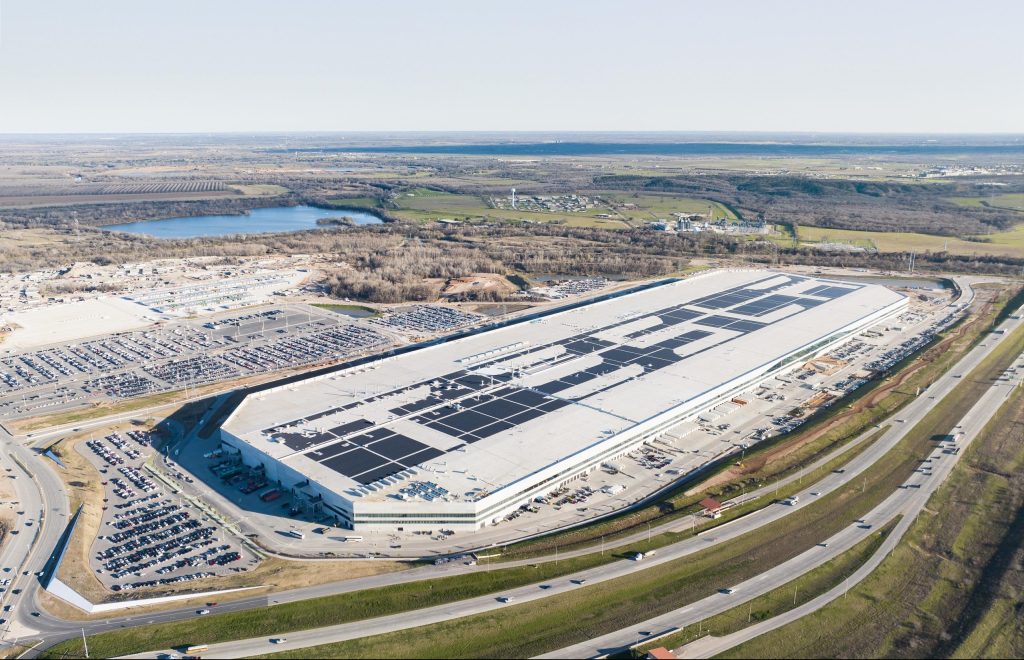
Tesla (NASDAQ: TSLA) recently talked about a variety of topics with Wall Street firm Piper Sandler, as the firm released a new note on Friday about their meeting with the company’s Investor Relations team.
According to the note from Piper Sandler, Tesla talked in detail about the Semi program, Optimus, and its potential valuation given its capabilities, the rollout of Robotaxi in Austin, and Full Self-Driving progress in the United States.
Tesla Semi Ramp
The Tesla Semi is set to enter mass production in 2026 at a dedicated factory near the company’s Gigafactory in Reno, Nevada.
The Semi has already been in pilot program testing, as Tesla has partnered with a few companies, like Frito-Lay and PepsiCo., to perform regional logistics. It has been met with excellent reviews from drivers, and it has helped give Tesla a good idea of what to expect when it makes its way to more companies in the coming years.
Piper Sandler said that it is evident Tesla is preparing for a “major ramp,” but it is keeping its expectations low:
“We’ve never expected much from this product, but we’d love to be proven wrong (Tesla is clearly prepping for a major ramp).”
Tesla Optimus and its value internally and externally
Optimus has been working in Tesla factories for some time, but its expectations as a product offering outside of the company internally have major implications.
Its role within Tesla factories, for now, is relatively low, but Optimus is still doing things to assist. By this time next year, Piper Sandler said Optimus should have bigger responsibilities:
“By this time in 2026, Optimus should be moving/staging parts within Tesla’s facilities.”
Outside of Tesla, Optimus could be a major beneficiary for companies as it could be a more affordable way to handle tedious tasks and manual labor. The firm believes that if Optimus can work 18-hour shifts, a cost of $100,000 per unit “would be justified.”
Tesla Robotaxi Expansion
The big focus of the firm with Robotaxi was Tesla’s expansion of the geofence in Austin this week. It was substantial, bringing the Robotaxi’s total service area to around 170 square miles, up from the roughly 90 square miles that rival Waymo is offering in the city.
Tesla Robotaxi geofence expansion enters Plaid Mode and includes a surprise
Tesla has doubled its geofence three times since its launch in late June, and it also revealed that its fleet of vehicles has expanded by 50 percent. It did not give a solid number of how many vehicles are operating in the fleet.
Tesla Full Self-Driving v14 launch
Tesla’s Full Self-Driving suite is set to have a fresh version, v14, rolled out in either September or October, and there are some pretty high expectations for it.
CEO Elon Musk said:
“The FSD release in about 6 weeks will be a dramatic gain with a 10X higher parameter count and many other improvements. It’s going through training & testing now. Once we confirm real-world safety of FSD 14, which we think will be amazing, the car will nag you much less.”
There is also some expectation that v14 could be the public release of what Tesla is running in Austin for Robotaxi. The firm confirmed this in their note by stating it “should enable Tesla owners to use software that is on par with Robotaxis in Austin.”
The only real hold up would be regulator skepticism, but Tesla can alleviate this with strong data.
The firm maintained its ‘Overweight’ rating and the $400 price target it holds on the stock.
News
Tesla starts Full Self-Driving rollout to owners in Australia
“To have this car drive me around Brisbane for an hour, we’re talking in the city, motorway, spaghetti bowl of on-ramps, it handled it so well. It was mind-blowing.”
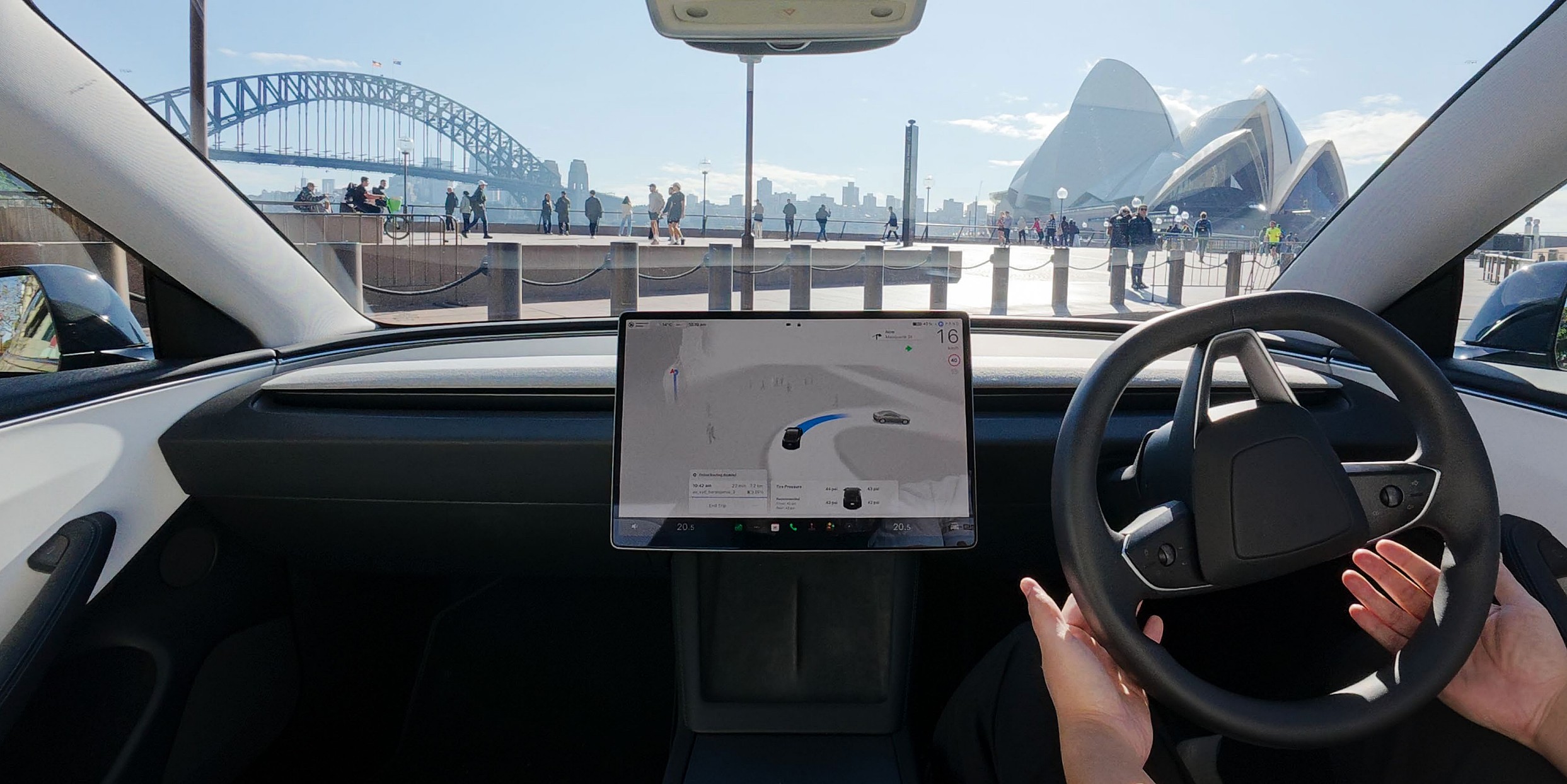
Tesla has already started rolling out its Full Self-Driving suite to owners in Australia after officially launching the driver assistance suite in the country yesterday.
Earlier this week, Tesla seemed to be moving toward the launch of Full Self-Driving (Supervised) in Australia after numerous media members received early access to test its performance.
Tesla officially launched Full Self-Driving (Supervised) in Australia yesterday. The company told media members who got early access to the suite that the rollout would begin with Hardware 4-equipped Model 3 and Model Y vehicles.
The release would be slow and gradual, with the process performed in stages.
The first stage of the rollout has already begun in Australia:
🚨 The first wave of Tesla Full Self-Driving is rolling out to owners in Australia
It’s here 🇦🇺 https://t.co/BQH8axjs0g pic.twitter.com/qsQUcG6lRx
— TESLARATI (@Teslarati) August 29, 2025
Tesla is reminding drivers in Australia who are using the suite for the first time that they must not become complacent while FSD is in operation. It is not fully autonomous and still requires the driver to remain attentive to road conditions and the vehicle’s surroundings.
Currently, the suite is only available to purchase outright, and it comes at a cost of $10,100. A subscription model is in the works, similar to the one in the United States, but Tesla has not yet announced its plans or pricing model for this.
Australia is the sixth country to receive Full Self-Driving (Supervised), or at least some version of it, as the United States, Canada, Mexico, China, and Puerto Rico all have access to the suite currently. In China, it is slightly different and is referred to as “City Autopilot” due to regulatory boundaries.
Early reviews of the suite have been very strong, as local media have also had the opportunity to try it, with one journalist saying, To have this car drive me around Brisbane for an hour, we’re talking in the city, motorway, spaghetti bowl of on-ramps, it handled it so well. It was mind-blowing.”
Mainstream media’s review of @Tesla‘s FSD (Supervised) after using it public roads in Australia:
“To have this car drive me around Brisbane for an hour, we’re talking in the city, motorway, spaghetti bowl of on-ramps, it handled it so well. It was mind-blowing.” pic.twitter.com/Rjsh6yXk93
— Sawyer Merritt (@SawyerMerritt) August 29, 2025
News
Tesla expands crazy new lease deal for insane savings on used inventory
Tesla was able to work through the hurdles in three states, expanding the deal to New York, New Jersey, and Florida.
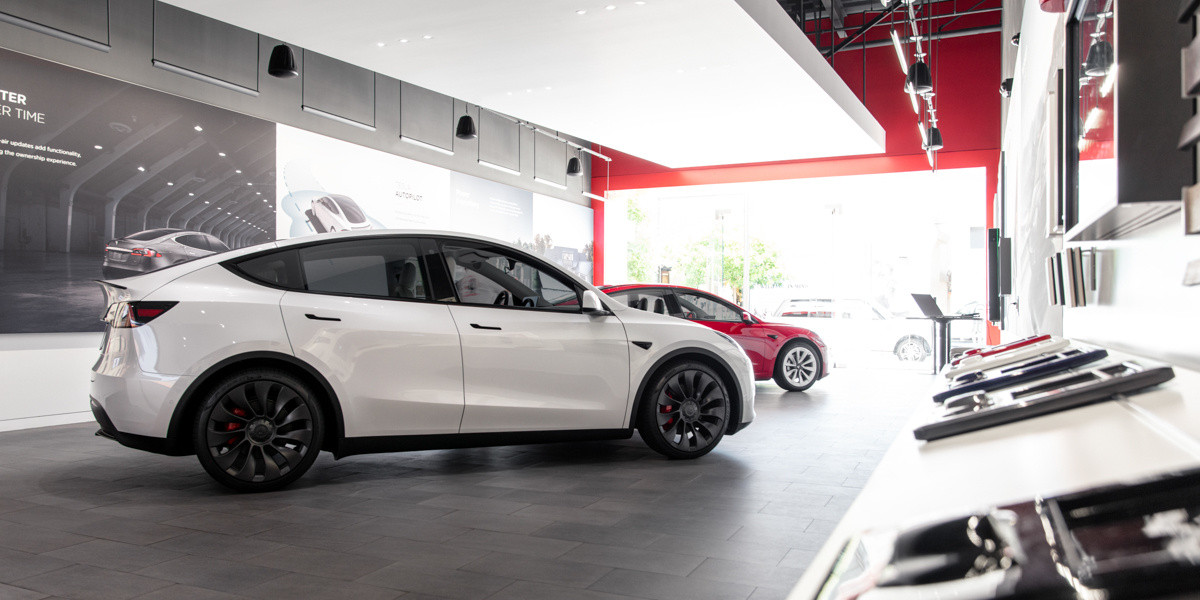
Tesla has expanded its new lease deal, offering people insane savings on used inventory.
Last week, we reported on Tesla offering crazy good lease deals on some of its used inventory, as people were able to grab monthly payments for as little as $225 per month with no money down.
There was only one catch: the deal was only available in California and Texas.
Tesla offers new deal on used inventory that you won’t want to pass up
However, Tesla has been working hard to get the lease deal expanded, and it finally has. Last night, Tesla’s VP of Finance, Sendil Palani, confirmed the deal had made it to three additional states.
Palani explained that the deal was only available in California and Texas because the leasing process requires working through regulatory hurdles in each state. He said it “involves a nontrivial amount of work,” which makes things more difficult to iron out.
Tesla was able to work through the hurdles in three states, expanding the deal to New York, New Jersey, and Florida. It is currently active in those states, Palani said:
Tesla’s used lease deal has expanded to three new states: New York, New Jersey, and Florida
Expanding to new states requires “a nontrivial amount of work,” but more states could receive the deal soon! https://t.co/eT1niyIU3I
— TESLARATI (@Teslarati) August 29, 2025
Tesla is really making a concerted effort to push its inventory out the door, and many areas already are running low on both new and pre-owned inventory. It has cut prices on some new inventory, while offering these new lease deals on used vehicles that remain.
It is beneficial to the consumer for obvious reasons: cheaper payments and the ability to get a great deal on a car for no money down. Tesla is also getting rid of vehicles that were once thought to be intended for the Robotaxi fleet, but it appears these older hardware vehicles are no longer in the company’s plans for that purpose.
This is the first time Tesla has offered lease deals on used inventory, as it has only offered an outright purchase option in the past. In an effort to boost deliveries and rid itself of older cars, these lease deals are truly beneficial for both parties. It is only a wonder how long they will last.
-
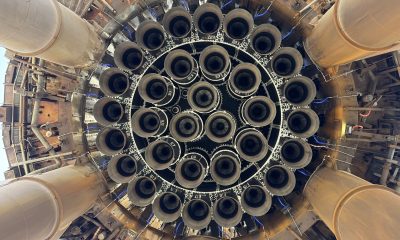
 Elon Musk2 days ago
Elon Musk2 days agoSpaceX Starship Flight 10 was so successful, it’s breaking the anti-Musk narrative
-
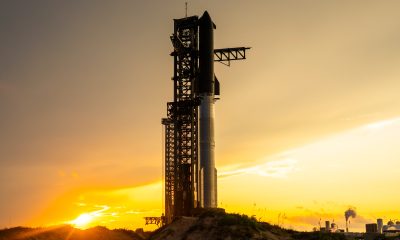
 Elon Musk1 day ago
Elon Musk1 day agoElon Musk reveals when SpaceX will perform first-ever Starship catch
-
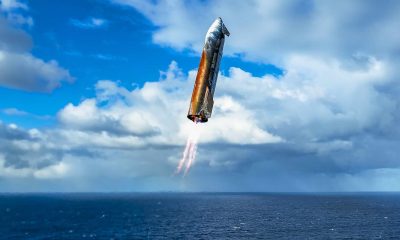
 Elon Musk11 hours ago
Elon Musk11 hours agoElon Musk shares unbelievable Starship Flight 10 landing feat
-
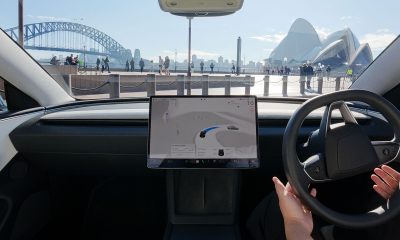
 News1 day ago
News1 day agoTesla launches Full Self-Driving in a new region
-
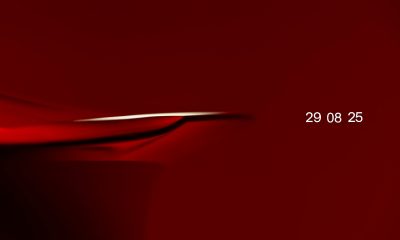
 News2 days ago
News2 days agoTesla appears to have teased a long-awaited Model Y trim for a Friday launch
-
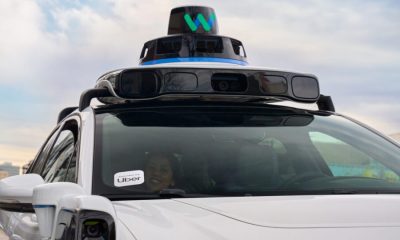
 News1 day ago
News1 day agoTesla Robotaxi rival Waymo confirms massive fleet expansion in Bay Area
-
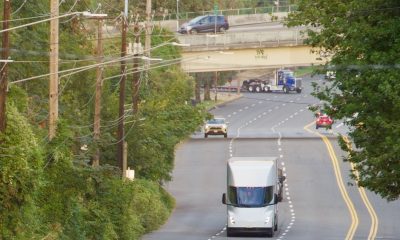
 News3 days ago
News3 days agoTesla Semi earns strong reviews from veteran truckers
-
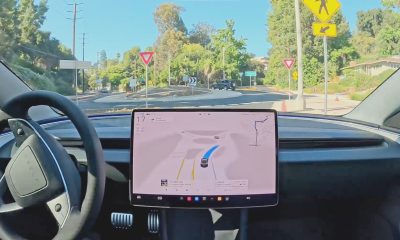
 News5 days ago
News5 days agoTesla makes big change to encourage Full Self-Driving purchases

